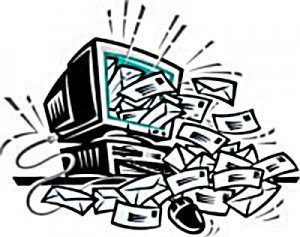Email hell is one of the major plights of any person in business. The nature of it can vary from big corporations to entrepreneurs because of things such as different devices, platforms, firewalls, etc. However, the basic principles of getting out of email hell relate to all circumstances.
Top down and bottom up
Email is just a tool. It can be extraordinary, especially when the parameters and deeper functions are well mastered. However, that’s not normally the case. If email use is to improve in effectiveness and efficiency, my belief is that any strategy must be directly tied to three things:
- The culture of the company and driving a higher level of accountability within
- Role modeling from the top executives about good email practices (assuming these have been appropriately created and communicated) {Tweet this}
- A concerted level of ongoing training and accompaniment — especially important with today’s influx and burden of new and alternative communication channels and devices.
Email hell because email is cheap…
One of the issues with email is the quantity. Probably, excessive quantity overwhelms the issue of quality. However, the standard of writing, the relevance and appropriate destinations (cc, bcc…) are also important. Emails are still the boiler room of most communication eco-systems. {Tweet this} Were I equipped with an email genie wand, I might conceive of a software that helps identify and measure email performance in a crowdsourced manner. For example, what if employees were able to star or favorite great emails? What if a plethora of spelling mistakes could be flagged? What if each mail sent was attributed a value and each person had a limited number of points available? The issue is that any system is designed to be gamed, of course! However, maybe there are new ways to innovate in the way we communicate. I think of it as bringing in some of the good notions of social media communications. What do you think abou these ideas?
More than the tool, it’s about accountability
When I was working at Redken in the US (part of the L’Oreal Group), we put in place a set of codes that reinforced a culture of accountability. The one defining behavior that I have forever kept with me is to deal with any burning issue between two individuals within 24 hours. It doesn’t relate directly to emails, but to corporate culture. If you have an issue with someone, it is your responsibility to make known that issue to the specific person. And, the crux of the method was that a simple email was not satisfactory. There was an escalation approach that was structured to remain between the two concerned parties. And, the hot issue had to be “received” and acknowledged by the other person. Such a culture needs to be modeled from above. And on-the-job training is also important. In today’s multi-platform world, that training is no longer optional.













Trackbacks/Pingbacks